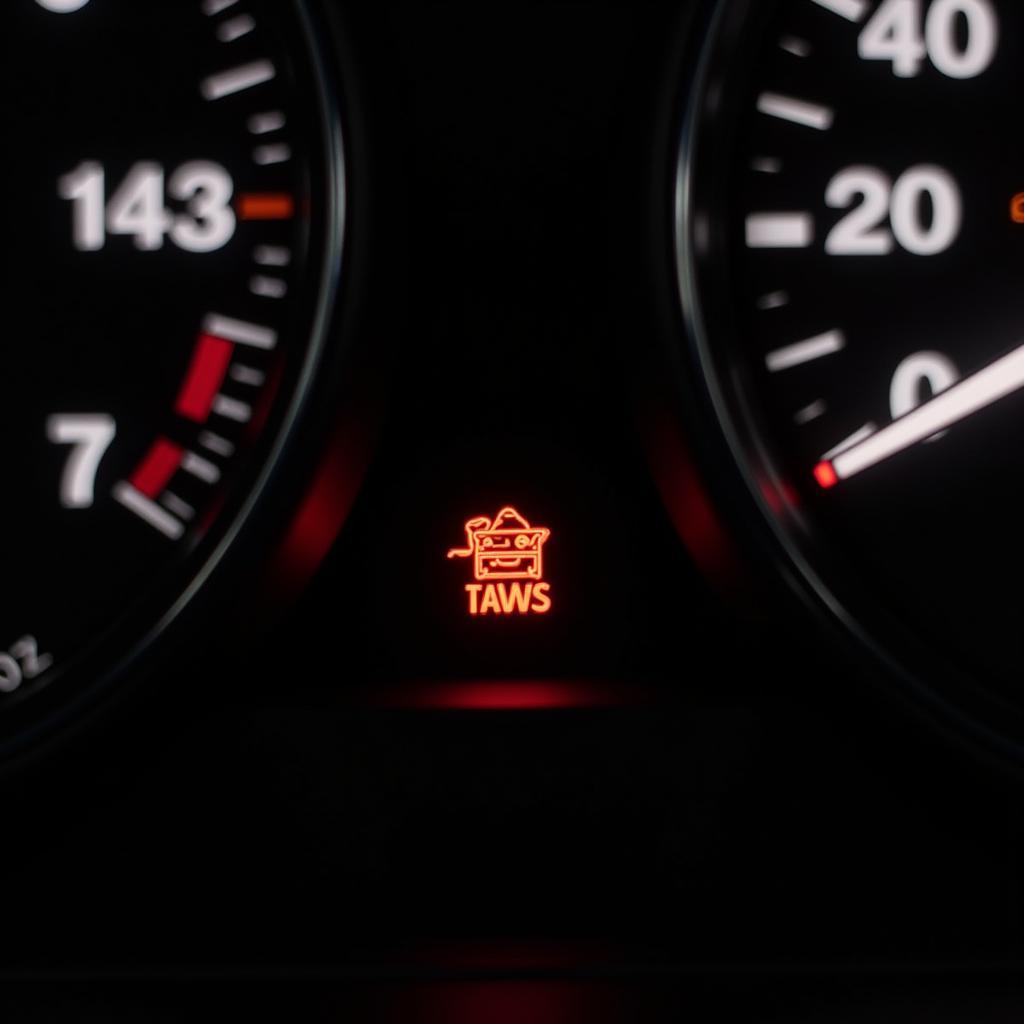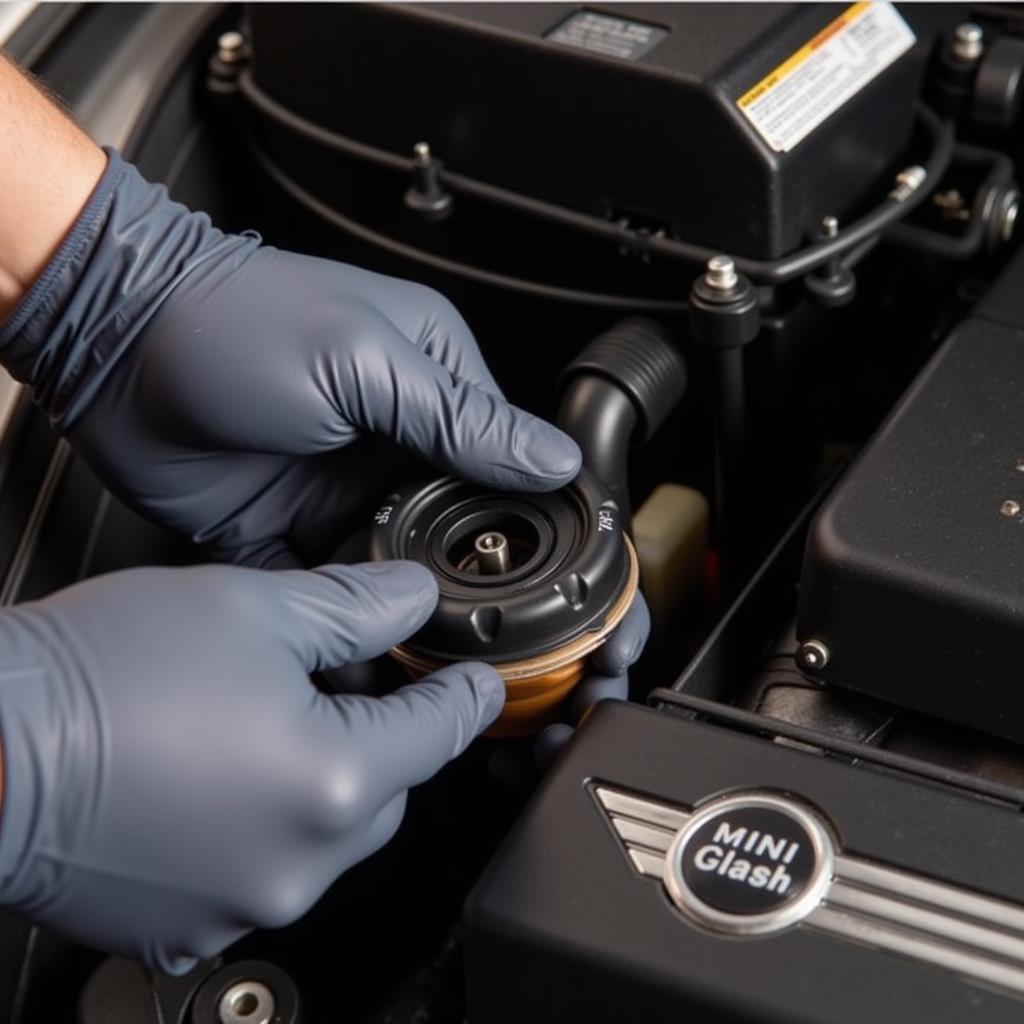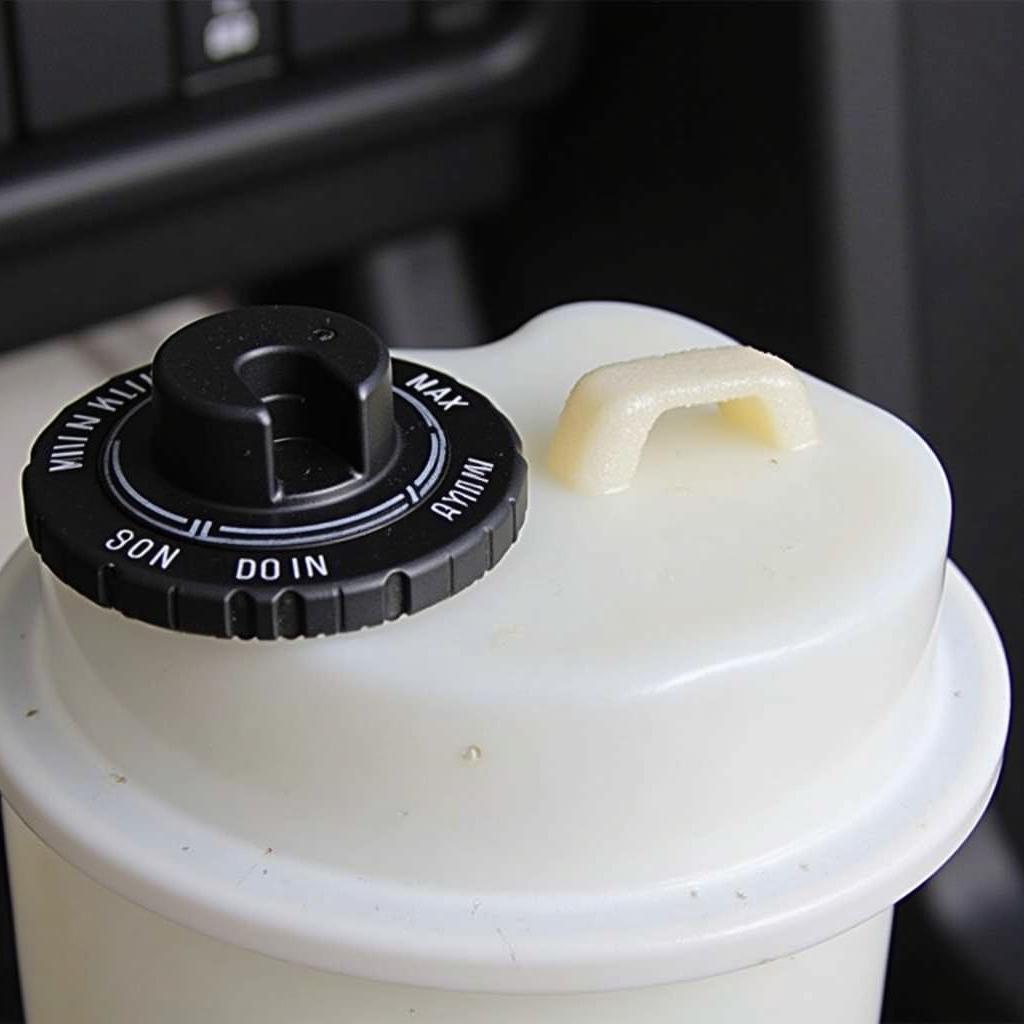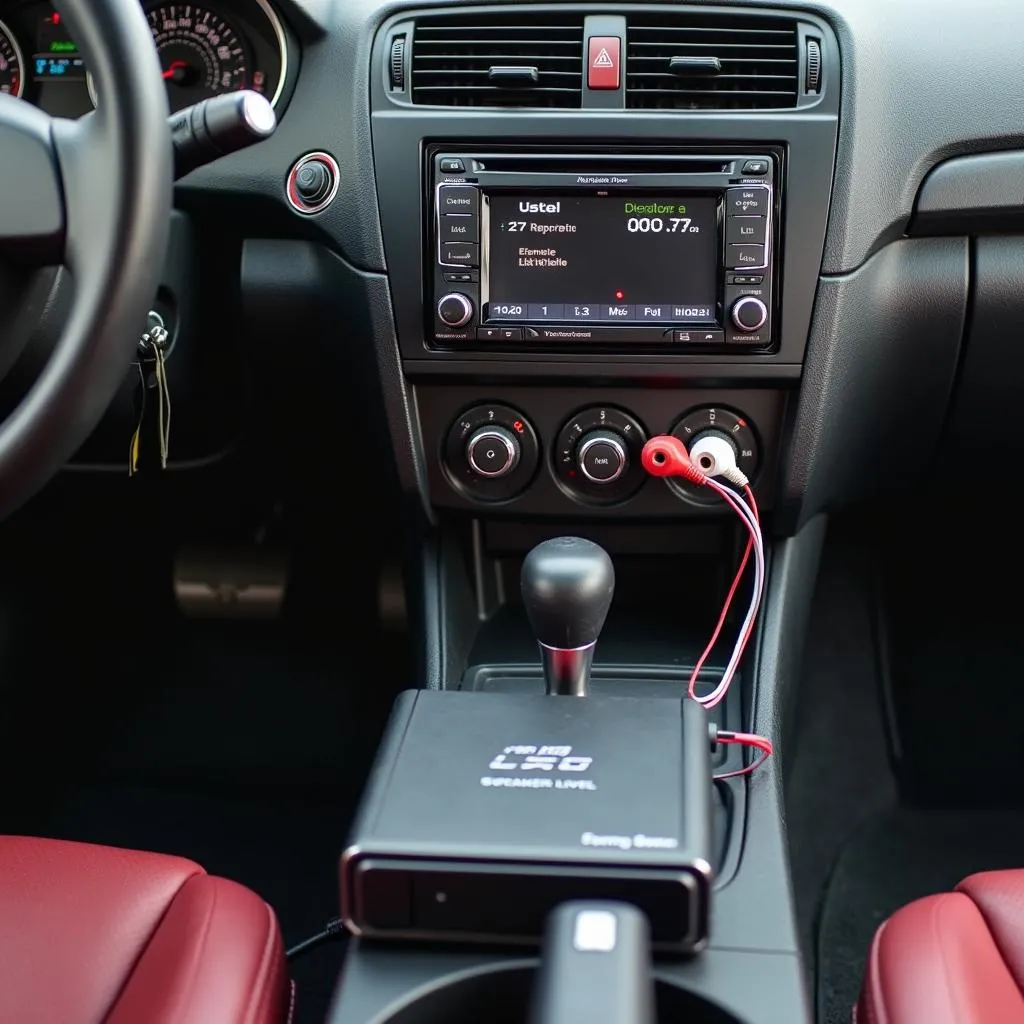The brake fluid warning light on your MINI Cooper is an essential safety feature, illuminating when the brake fluid level is low or there’s an issue with the braking system. Ignoring this warning light could lead to brake failure, putting you and others at risk. This comprehensive guide will walk you through the steps to diagnose and potentially reset a MINI brake fluid warning light.
Understanding Your MINI’s Brake System and Warning Lights
Your MINI’s brake system relies on hydraulic pressure to function correctly. Brake fluid, a critical component, transmits this pressure from the brake pedal to the wheels, enabling your car to stop. When the brake fluid warning light turns on, it indicates a potential issue with this system, and it’s crucial to address it promptly.
While the brake fluid warning light itself might seem straightforward, it can be triggered by various factors. These factors include:
- Low brake fluid level: The most common cause is a leak in the brake lines or a worn-out brake component.
- Worn brake pads: As your brake pads wear down, the brake calipers need more fluid to engage the brakes, potentially triggering the warning light.
- Faulty brake fluid level sensor: Like any other sensor, the brake fluid level sensor can malfunction, incorrectly illuminating the warning light.
- Issues with the ABS or DSC system: In some cases, a problem with the Anti-lock Braking System (ABS) or Dynamic Stability Control (DSC) can also trigger the brake fluid warning light.
 MINI Cooper dashboard with brake fluid warning light illuminated
MINI Cooper dashboard with brake fluid warning light illuminated
Diagnosing the Problem: Why is My MINI Brake Fluid Warning Light On?
Before attempting to reset the brake fluid warning light, it’s essential to diagnose the root cause:
-
Check the Brake Fluid Level: Park your MINI on a level surface and turn off the engine. Locate the brake fluid reservoir under the hood (refer to your owner’s manual for the exact location). Carefully open the reservoir cap and visually inspect the fluid level. It should be between the “MIN” and “MAX” markings.
-
Inspect for Leaks: While checking the fluid level, visually inspect the brake fluid reservoir, brake lines, and connections for any signs of leaks. Look for wet spots, drips, or puddles of brake fluid. If you notice any leaks, do not attempt to drive the car. Contact a qualified mechanic immediately.
 Checking brake fluid level in a MINI Cooper
Checking brake fluid level in a MINI Cooper -
Check the Brake Pads: If the brake fluid level is adequate and you don’t see any leaks, the next step is to inspect the brake pads. Worn brake pads can also trigger the warning light. If you’re not comfortable doing this yourself, a mechanic can check them for you.
-
Consider ABS/DSC Issues: If you’ve ruled out low brake fluid, leaks, and worn brake pads, the warning light might indicate a problem with the ABS or DSC system. These systems are more complex and typically require professional diagnosis and repair.
Can I Reset the MINI Brake Fluid Warning Light Myself?
If you’ve identified and resolved the underlying issue causing the brake fluid warning light to illuminate, the light should go off automatically. However, in some instances, you might need to reset the warning light manually.
Important Note: Before attempting any reset procedures, address the root cause of the warning light. Simply resetting the light without fixing the underlying problem is dangerous.
Simple Reset Procedure:
- Start the Engine: Turn on your MINI’s engine.
- Turn the Steering Wheel: Rotate the steering wheel all the way to the left, then all the way to the right a couple of times. This might help reset the steering angle sensor, which could be related to the DSC system.
- Drive a Short Distance: Take your MINI for a short drive at low speed, applying the brakes gently a few times.
If the warning light persists after trying these steps, it indicates a problem that needs professional attention.
When to Consult a Mechanic
While you can diagnose and potentially reset the MINI brake fluid warning light yourself for minor issues, it’s crucial to consult a qualified mechanic in the following situations:
- The warning light remains on after trying the reset procedure.
- You notice a leak in the brake system.
- You suspect an issue with the ABS or DSC system.
- You’re uncomfortable performing the diagnosis or reset yourself.
Attempting to fix complex brake system problems yourself can be dangerous. It’s always best to err on the side of caution and seek professional help when dealing with your MINI’s brakes.
Preventing Future Brake Fluid Warning Light Issues
Regular maintenance is key to preventing brake system problems and warning lights:
- Regular Brake Fluid Checks: Make it a habit to check your brake fluid level at least once a month.
- Adhere to the Recommended Brake Fluid Flush Schedule: Consult your MINI’s owner’s manual for the recommended brake fluid flush interval.
- Pay Attention to Changes in Brake Pedal Feel: If your brake pedal feels spongy, soft, or goes closer to the floor than usual, it could indicate a brake fluid leak or other issues.
 Close up of a MINI Cooper brake fluid reservoir and cap
Close up of a MINI Cooper brake fluid reservoir and cap
FAQs About MINI Brake Fluid Warning Light Reset
Q: Can I drive my MINI with the brake fluid warning light on?
A: It’s highly discouraged to drive your MINI with the brake fluid warning light illuminated. It indicates a potential issue with the brake system, and driving with compromised brakes is extremely dangerous.
Q: How much does it cost to fix a MINI brake fluid leak?
A: The cost of repairing a brake fluid leak in a MINI Cooper varies depending on the leak’s location and severity. It could range from a minor repair costing a few hundred dollars to a more significant repair costing over a thousand dollars.
Q: How often should I change my MINI’s brake fluid?
A: MINI recommends flushing the brake fluid every two years or as specified in your owner’s manual.
Q: Can I add any brake fluid to my MINI?
A: No, you should only use DOT 4 brake fluid that meets MINI’s specifications. Using the wrong type of brake fluid can damage the brake system. Refer to your owner’s manual for specific recommendations.
Conclusion
Addressing the MINI brake fluid warning light promptly is crucial for your safety and the longevity of your car. By understanding the causes and following the proper diagnostic steps, you can effectively troubleshoot the issue.
Remember, while resetting the light might seem simple, it should always be done after addressing the underlying problem.
Prioritize regular maintenance and consult a qualified mechanic when needed to keep your MINI’s braking system in top condition.

